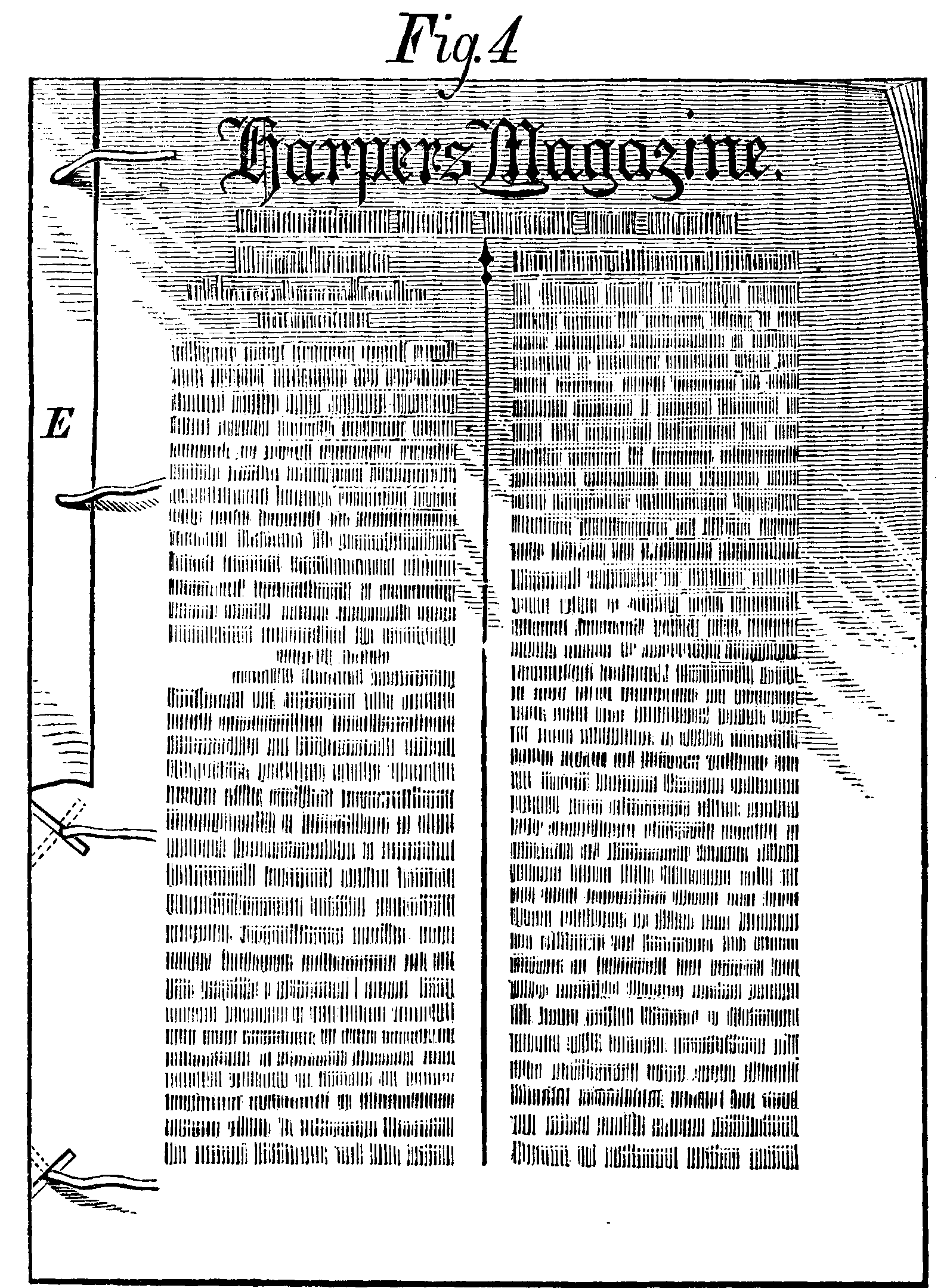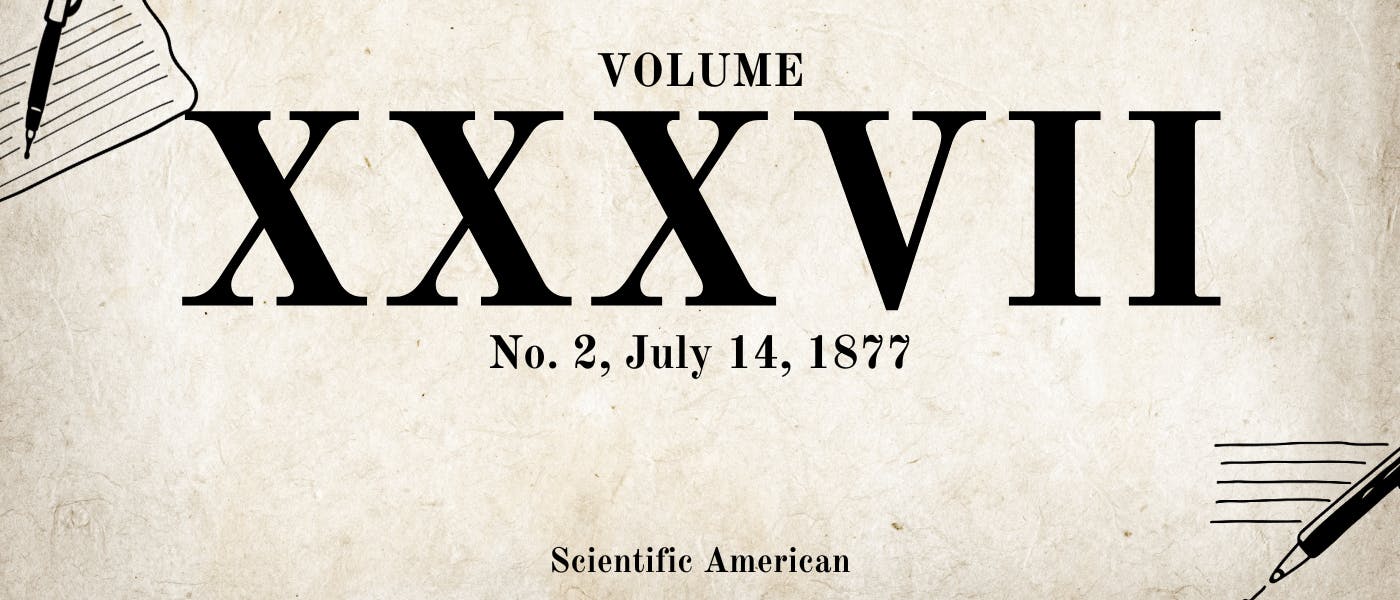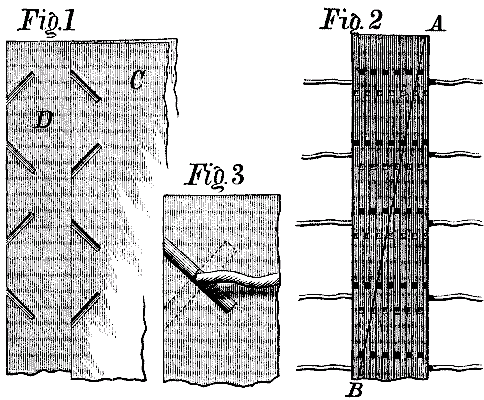Scientific American, Vol. XXXVII.—No. 2. [New Series.], July 14, 1877 by Various, is part of the HackerNoon Books Series. You can jump to any chapter in this book here. A NEW METHOD OF BOOKBINDING.
A NEW METHOD OF BOOKBINDING.
The annexed engravings represent a new system of binding books, for which a number of important advantages are claimed. It obviates stitching, allows of each leaf being firmly secured, and hence is especially well suited for single-leaved books. It admits of plates and maps being bound in their proper places instead of being pasted in, and renders the book much stronger and more durable. The inventor claims a saving of 40 to 75 per cent of the time required for stitching, and of 50 per cent of the time needed in ordinary rebinding work.

The mode of operation is as follows: On receiving the sheets, the binder folds them and places them in consecutive order, according to the printer's signature. The front and bottom edges of the book are then trimmed so as to obtain two straight sides; and the backs of the sheets are cut off, transforming them into single leaves. Horizontal lines are now marked with pencil across the back of the book for the saw cuts; and a diagonal line, A, B, Fig. 2, is drawn to serve as a guide in replacing the leaves in their proper places. A thin coat of glue is next applied to the back; and when this is dry, the book is divided into sections of from four to eight leaves (without counting them) entirely disregarding the printer's signatures, but placing the sheets in their original order. The binder places the first section removed at his right hand, the next at his left, and so on, forming two piles. Each pile is then straightened, and in the back of each, a little below the transverse lines, are made bevel cuts with the saw. Said cuts are ⅛ inch in length, inclined at an angle of 45°, and so placed that one half their length is above and the other half below the marked line. When one pile of sheets is thus sawn, the other pile is similarly treated; but the corresponding cuts are made at relatively opposite angles. This will be understood from Fig. 1, in which C represents the edge of the right hand pile, for example, and D that of the left hand pile.
The sections of each pile are now returned in their regular order, according to the printer's signatures. Should a section have been misplaced, the diagonal line, being thus broken, will show the fact. It will be seen, however, that this arrangement involves the alternate use of sheets from each pile, so that, when all are put together, the beveled cuts will cross or form dovetails, as shown in Fig. 3. Half inch strips of white paper muslin, E, Fig. 4, are next pasted around the back edges of the first and last sections. This is done to strengthen the hold of the twines in the back of the book, said sections necessarily bearing the whole strain of the covers. The twine used corresponds in size to the holes made by the coincidence of the beveled saw cuts. This twine is passed through the holes by means of a blunt darning needle. The back of the book is shown in Fig. 2; and in Fig. 4 the twines are represented as passed. Nothing further remains to be done but to paste in the fly-leaves and lining, and finish the book in the usual manner.
It is evident that this a very much stronger method of securing the leaves than that in which the twine is simply laid and glued in a straight cut. Each leaf is independently fastened; and the thread is prevented from cutting through, as is commonly the case when the book has been used to any great extent. Books can be bound to open more or less as desired; and in rebinding, instead of taking the book apart and cutting threads, a thin shaving is sliced off the back, and the leaves are treated in the manner already described.
Patented March 20, 1877, by Mr. Florenz E. Schmitz. For further information, address Messrs. Schmitz and Slosson, box 1180, Middletown, Orange county, N. Y.
About HackerNoon Book Series: We bring you the most important technical, scientific, and insightful public domain books.
This book is part of the public domain. Various (2012). Scientific American, Vol. XXXVII. —No. 2. [New Series.], July 14, 1877. Urbana, Illinois: Project Gutenberg. Retrieved https://www.gutenberg.org/cache/epub/38481/pg38481-images.html
This eBook is for the use of anyone anywhere at no cost and with almost no restrictions whatsoever. You may copy it, give it away or re-use it under the terms of the Project Gutenberg License included with this eBook or online at www.gutenberg.org, located at https://www.gutenberg.org/policy/license.html.


